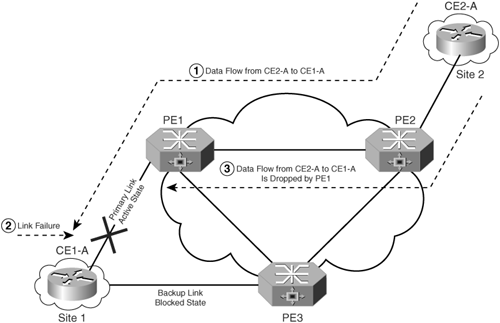

Mac address learning process mac#
This MAC Learning mechanism works and all the destinations are learned by all the nodes. This time, only the real destination, PE-A will receive the packet. So, without flooding the packet, it will send the packet directly to the exact destination.

Router PE-C knows the destination MAC address and port number for this interface that connects to the customer anymore. Now, think about that, PE-C is sending a packet to PE-A.

So, the Source Port and MAC Address is recorded to MAC Tables (FDBs). This is flooding like in Ethernet Switches. So, PE-A Router, sends the packet through all the related SAPs and SDPs (LSPs). Think about that, a device in Brach A sending a packet to a device in Branch C.Īt the beginning, the MAC tables (FDBs) are empty. This is a normal interface in Cisco and other networks. This is a Nokia term used for customer faced interfaces. Note : Here, the branches are connected to the SAPs. We will quickly cover how VPLS MAC Learning is done on this VPLS topology. Let’s talk VPLS MAC Learning on an example. Persistent MAC learning, or Sticky MAC, is a port security feature that lets an interface retain dynamically learned MAC addresses when a switch is restarted. The Source MAC Address and its Port is recorded and when there is a packet to this node, the packet is sent directly to the exact destination. After this learning, packets are directly sent to the destinations which are known by FDB.īasically, MAC Learning is done from the Source of the packets always. The Forwarding Databases (FDB) is filled with such traffic and this process continues till all the nodes learn eachother. After this flood operation, other ends learn the senders MAC and record its FDB Table. Because there is no record about the destination. So, if a packet received from a SAP or a SDP, then it is flooded through all SAPs and SDPs (LSPs). At the beginning there is no record in Forwarding Databases (FDB). If there is no record, then it is flooded. This is flooding mechanism like in Ethernet Switches. In other words, if there is a record about the destiantion in FDB, it is sent directly to that destination with the help of FDB. If not, it forwards the traffic through all the ports. This mini switch sends the packets to its destination if it knows its Destination MAC Address. Think about this, VPLS is like a mini switch in the Servis Router. And then, the traffic is switched according to the Forwarding Databases (FDB). In FDBs, the MAC Addresses are associated with SAPs and SDPs. These tables are Forwarding Databases (FDB). MAC Address Learning is done and the forwarding process is done according to the tables in which MAC-address and port information is kept. MAC Learning in VPLS is similar to the MAC learning mechansim in an Ethernet Switch. Because of its Layer 2 nature, “MAC Learning” is very important for VPLS.


 0 kommentar(er)
0 kommentar(er)
